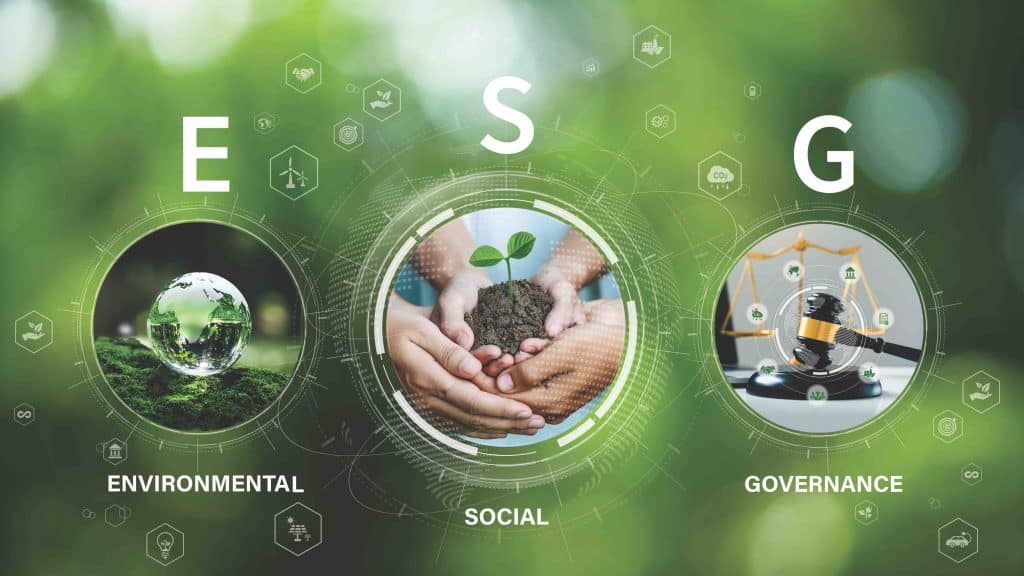Story: Lawyer Nguyen Van Huan
Photos: Shutterstock
The question is no longer “should we practice ESG”, but rather what should businesses do to practice ESG, overcome challenges, and seize the opportunities brought by this wave.
Practicing and reporting on ESG (Environmental, Social, Governance) is gradually becoming a necessary condition for joining the global supply chain and accessing capital.
In the context of globalization, the ESG wave has significantly impacted Vietnamese enterprises through the value chain and capital markets: business partners require ESG information to assess risks related to the purchase and sale of goods, while investors, banks, and investment funds need transparent ESG information to make investment and funding decisions.
However, in Vietnam, ESG remains in its early stages, with mostly large enterprises participating.

ESG is here!
ESG does not have a unified definition. Narrowly understood, ESG is a matrix of indicators for businesses to inventory, measure, and disclose the impacts and risks in their production and business activities towards sustainable development. Broadly understood, ESG provides a framework for controlling impacts and risks (both financial and non-financial) for businesses and investors to operate and make investment decisions.
The global market size for ESG investment funds is currently around USD 3 trillion, and the size of ESG-oriented funds is estimated to be ten times that amount.
Beyond Europe and America, the ESG wave is growing stronger in Asia. The current size of Asian ESG investment funds is around USD 83 billion. New types of bonds for sustainable development are being issued, and investors are increasingly active in controlling ESG investments. Notably, the ESG framework, including the ASEAN Taxonomy and the China-EU Common Ground Taxonomy, is also being developed, laying the foundation for ESG practices in the Asian region.
In the near future, ESG frameworks will become increasingly detailed and provide more valuable information for businesses and investors. These frameworks will be enhanced with social factors, such as social taxonomy (investment-oriented towards activities with positive social impacts), minimum safeguard requirements (investment activities can only be considered sustainable when complying with minimum social standards), and reporting standards related to the impact on human rights in business.
ESG practices in Vietnam
Some Vietnamese enterprises have taken initial steps to prepare for and implement ESG practices, aligning with international trends. However, these efforts are still in their early stages.
According to a study by PwC and VIOD, 80% of surveyed businesses have either committed to ESG or plan to do so within the next two to four years. Foreign companies operating in Vietnam are leading the way, with over 60% having set ESG goals and allocated budgets for ESG initiatives. These companies tend to prioritize governance (“G”) and environmental (“E”) aspects.
Vietnamese businesses are also increasingly engaging in ESG activities and initiatives, such as annual sustainability assessments using the CSI index by VBCSD, the VB4E initiative for environmental action, or carbon credit trading platforms. Most of their ESG initiatives focus on environmental aspects (“E”).
However, Vietnamese enterprises are currently reactive rather than proactive with ESG. Mr. Nguyen Cong Minh Bao, Vice President of the Green Growth Sector Committee of EuroCham Vietnam, noted, “The current approach to ESG is mainly reactive and compliance-driven, largely due to legal requirements and supply chain pressures. Businesses are “swimming on their own”, struggling to integrate ESG into their business strategies and implement it effectively.”

A study by the Fair Finance Vietnam Initiative found that 11 Vietnamese commercial banks have publicly committed to ESG policies at various levels, focusing on green credit, climate change, renewable energy, community sustainability, and transparent governance.
ESG commitments from banks have improved significantly since 2020, with the most progress in governance (“G”) and the least in environmental (“E”) aspects. This situation partly arises from the ongoing development of the ESG legal framework. A notable ESG highlight is BIDV’s issuance of VND 2,500 billion in green bonds. Green bonds are crucial financial tools as Vietnam needs USD 368 billion to realize its Green Growth Strategy, with an estimated 50% coming from the private sector.
These indicators suggest that ESG practices in Vietnam will continue to focus on creating positive impacts on hot topics related to green growth. This trend is consistent with global ESG practices.
Mastering challenges, seizing opportunities
For Vietnamese enterprises, the question is no longer “should we practice ESG” but “what must be done to practice ESG”. However, they face numerous challenges in this process.
Awareness is the first challenge. ESG requires businesses to shift their mindset from “shareholder capitalism” to “stakeholder capitalism”. Additionally, as ESG frameworks are rapidly evolving, updating ESG awareness at an enterprise’s highest leadership levels is crucial for innovating the business model.
The next challenge is capability. ESG demands that businesses compile comprehensive indicators through coordination not only within the enterprise but also with stakeholders such as business partners in the value chain and employees. This complexity can overwhelm many businesses. The advice for businesses is to start participating in suitable ESG initiatives like VBCSD or similar ESG initiatives to enhance ESG practice capabilities. Enterprises should begin by self-assessing their level of ESG practice—a foundation for building capacity—using self-assessment tools, such as those developed in collaboration with USAID.
The most concerning challenge for businesses is cost. Integrating and practicing ESG in enterprises requires investment for long-term goals. To address this issue, businesses can start with small steps, such as investing in compiling ESG impacts in current production and business activities to create sustainable development reports. Essentially, this involves systematizing available information into ESG reports, thereby setting development directions and integrating ESG. ESG reports should not only include positive impacts but also demonstrate how the enterprise controls negative impacts. Businesses also need to start compiling impacts on the “S” aspects, even in activities focused on “E”.
Moreover, they need to proactively approach ESG initiatives, especially industry-specific initiatives. This helps them save costs and gain valuable experience.
ESG also opens up opportunities to access financial markets for sustainable development investment, such as green bonds. ESG financial instruments are both a goal and support for enterprises transitioning to sustainable business models.
Some ESG reporting frameworks
– Investment orientation:
- EU Taxonomy regulation 2020;
- EU CBAM;
– Sustainable development reports:
- GRI (Reporting the impact of business on society and the environment);
- TCFD (Climate-related financial disclosures);
- ISSB-IFRS (Common reporting standards and environmental, social, and governance standards currently under development);
- EU SFDR (Financial system information reporting on sustainable development investment);
- EU CSRD (Corporate sustainability reporting in the EU);
- ESRS (Reporting standards on impacts related to sustainable development from the business and affected stakeholders’ perspective).










